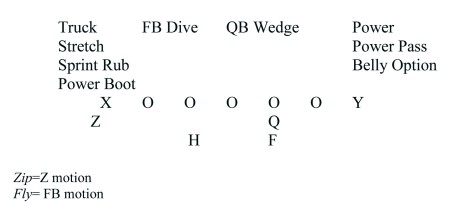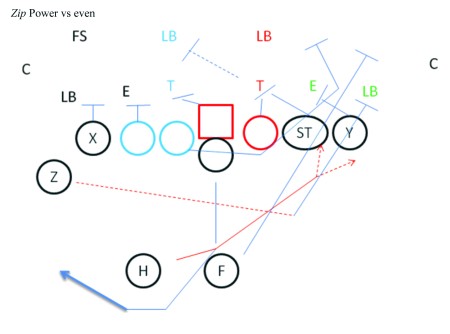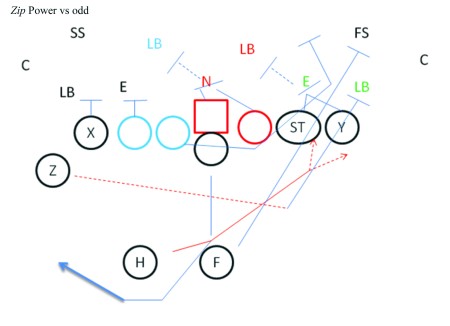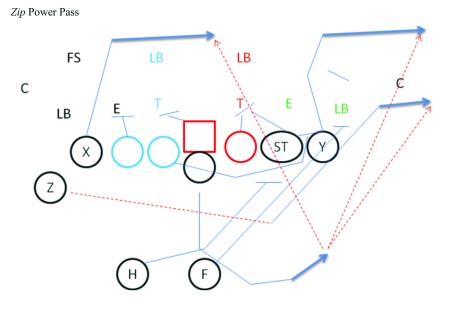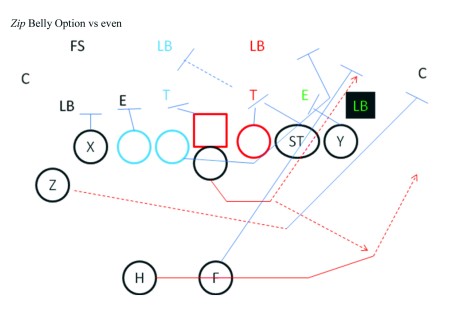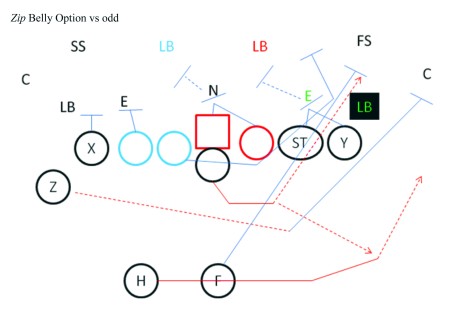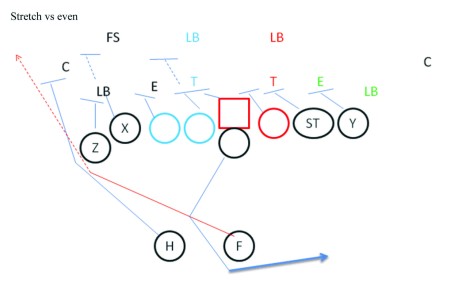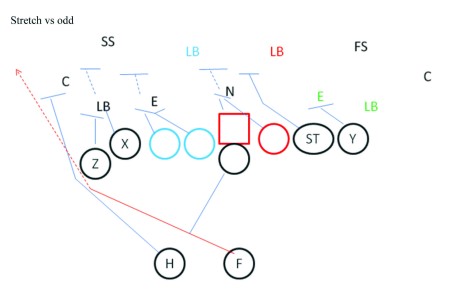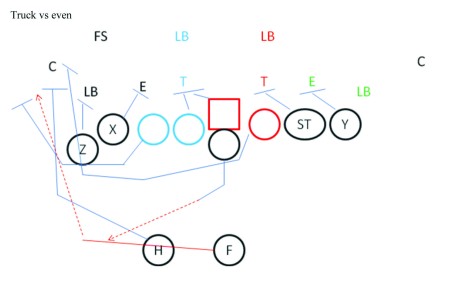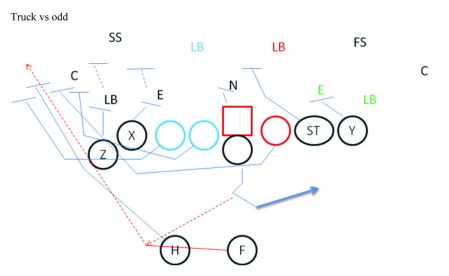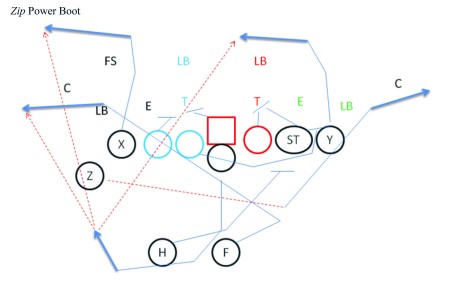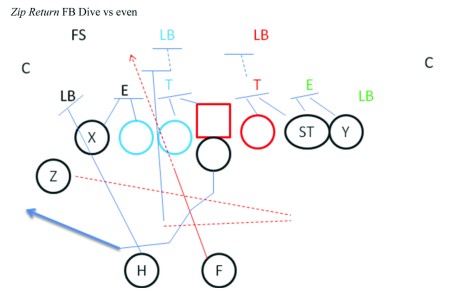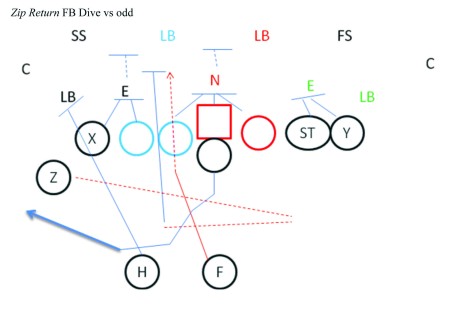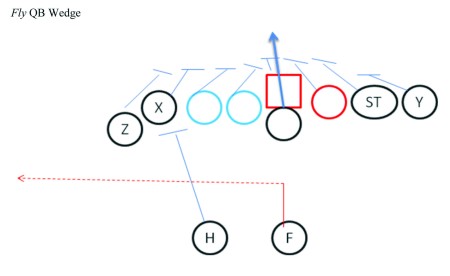Article CategoriesAFM Magazine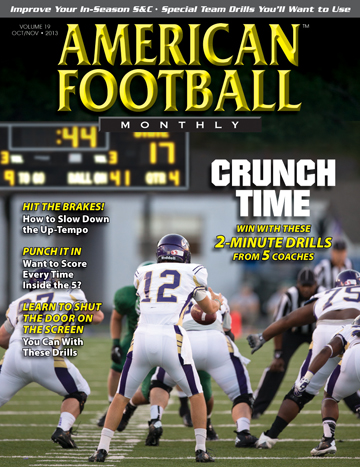
|
Rolling Thunder - Be efficient in the 'compressed' Red Zone.by: Mitch BurtonOffensive Coordinator, Granite Hills High School (CA) © More from this issue No matter what your base offense is, you will find it necessary to make adjustments in what I call the compressed red zone; that is, from the three in. Adapting your base personnel, formations, and plays can be costly in terms of time and confusing to your players, who try to relate schemes and techniques used in the open field to this unique situation. Adopting a “Thunder Offense” can give you a personnel, formation, and play package that is specific to the compressed red zone. When your players hear “Thunder” they don’t have to remember the entire offense, thus focusing their thinking and allowing other position players to contribute without learning the entire offense.
Diagram 1.
Diagram 2B: Zip Power vs. Odd
Diagram 3: Zip Power Pass
Diagram 4A: Zip Belly Option vs. Even
Diagram 4B: Zip Belly Option vs. Odd
Diagram 5A: Stretch vs. Even
Diagram 5B: Stretch vs. Odd
Diagram 6A: Truck vs. Even
Diagram 6B: Truck vs. Odd Since most goal line defenses are concerned with A and B gap runs, most of the Thunder series attacks the C and D gaps, where defenders can be easily outnumbered. Also, play-action passes complement the base runs, the power pass, and the boot (Diagram 7), which can counter a fast, aggressive front. Finally, the FB dive (Diagrams 8A and 8B) and the QB wedge (Diagram 9) can attack the A and B gaps if the defense overplays the C gap or is soft in the middle.
Diagram 7: Zip - Power Boot
Diagram 8A: Zip Return - FB Dive vs. Even
Diagram 8B: Zip Return - FB Dive vs. Odd
Diagram 9: QB Wedge Your best Thunder play can also serve as your two-point play. The Thunder offense has been extremely successful for our teams because it attacks all the run gaps while also providing several play-action options. Remember, you can decide where you want to place the ball on the two-point play (left hash, middle, right hash), so use the field to set up your play. A good strategy is to put the ball on the hash and overload into the boundary. Also, this package can be an effective fourth and short option, or even a “four minute offense” if you are trying to burn the clock at the end of a game.It is important to be able to signal these plays in to the QB because you don’t want to substitute personnel in the compressed red zone (you want your best players who have had the most repetitions in practice). Also, the QB can always check to a QB wedge if the defense is in a wide even front and the center has easy access to the MLB. Finally, decide before the series starts if you are going to “go for it” on fourth down inside the three yard line. You should consider pre-game scouting, the two point chart, game clock, and flow of the game. Use a play-action pass on either first or second down, when play-action is most effective. |
|
| HOME |
MAGAZINE |
SUBSCRIBE | ONLINE COLUMNISTS | COACHING VIDEOS |
Copyright 2024, AmericanFootballMonthly.com
All Rights Reserved


